Gentle Reader,
What a ski season it is here in the Northwest. The snow conditions surprise us every Wednesday as my band of 16-24 friends head up to the pass on a big bus (potty included). It’s a good thing to use this bus company for January and February when the road conditions are dicey and icy. The bus drivers have gotten stuck twice! The ladies who ski are mostly over 65. Yesterday I learned that one companion, a tall, slim brunette with impeccable make up and style is 80. We are still climbing logging roads and snow plowing down, but we have become partial to the groomed Nordic tracks, of which there are a few. One of oldest members skis with the blind across the US and Canada. We do have a special club here with a pair of set tracks for the blind skier and her companion guide. We often see dog teams, although mid-week is a quiet time to ski. People-watching happens on Saturday and Sunday. Yesterday the only viable skiing was on the reclaimed rail road track which snakes its way up from Seattle, through the pass and on East. Long ago this track was pulled up and remaining bed has become a favorite mountain bike and Nordic ski trail.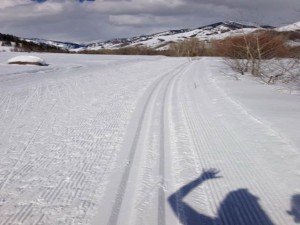
Pushing and gliding for 3 hours and 8 miles along this relatively flat track awakened muscles I had not used so strenuously. This morning I have been on the floor getting the creaks and groans out of my joints-back and hip and knee pain are no fun, nor are arthritis flare-ups. Several techniques work well.
1. tie a strong flexible tubing around your thighs, squat and walk to the left 20 steps and then to the right. In the picture, the tubing is around the ankles. I find the tubing stays put better at the thigh.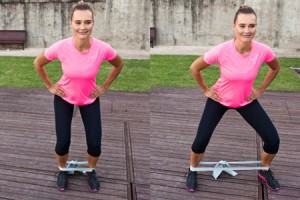
2. Lying on your side with your knees pulls up part way, lift one knee up and then back down in a clam-shell move. Several reps on each side.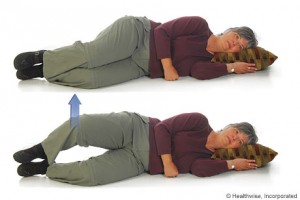
3. Put one end of the flexible tubing in the door jam and loop the other around your foot. Stand side ways to the door and take the outside foot, lifting straight legged 10 reps. Turn and draw the foot away from the door across the body. This is a classic standing Pilates move. Change legs and repeat. Years ago I bought a heavy steel foot stool off Ebay to use for this exercise as it works better if you are standing a few inches off the floor. Gyms have portable durable plastic steps that can be used. Personally, my little upholstered foot stool would never be taken for an exercise prop as it sits by the front door. This is the best picture I could find. Imagine the end of the theraband as a knotted tube in the door jab, the bottom around your shoe.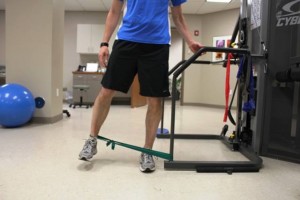
4. face the door and, with the foot in the loop of the tubing, push it away from the door while standing erect, in perfect posture, on the other foot. Several reps on both legs will help.
I am glad I climb stairs every week (200), going up and down sideways with the grape vine step. I found yesterday that straight way skiing tired the knees. Most women have slightly knock-knees and prolonged straight walking, hiking or skiing stressed them. Whenever you have the opportunity to go up or down stairs side-ways, one foot behind, then in front, do it. Your knees will not stress on the straight-away as much. I am going to get someone to film me doing this. There are no pictures on the web that I can find.
Avoiding arthritis pain in the knees, back and hips can be challenging, and fun. Get out there and enjoy the winter weather if you are lucky enough to have snow. Don’t let the diagnosis of osteoarthritis or spinal stenosis keep you from moving. Browse the techniques I have offered in my blog postings and try some of them. Better still, leave a comment about the techniques you have found work well.
Fondly,
Be Well, Do Well, Keep Moving
Betsy
Injured at 52. Diagnosed and sentenced to a wheelchair at 55. Hiking, skiing, dancing and walking at 75. Read my story.
206 933 1889 betsy@HiHoHealth.com www.GrandmaBetsyBell.com

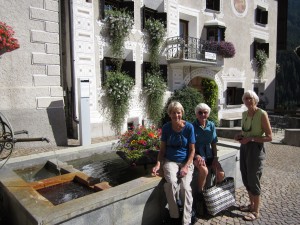
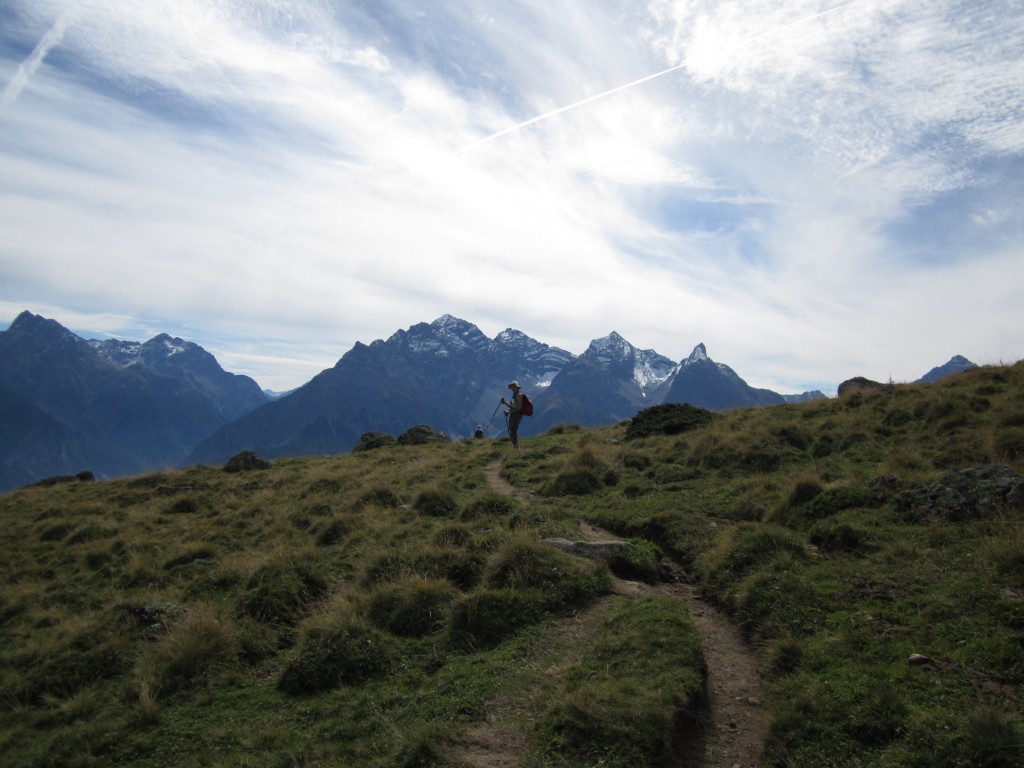
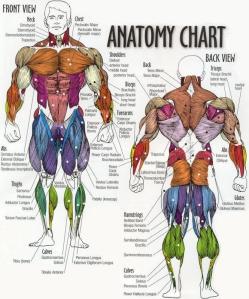
 looked at my Magnetic Resonance Imaging—MRI, he declared my bones to be poor candidates for surgery. They already looked worn out at age 53.
looked at my Magnetic Resonance Imaging—MRI, he declared my bones to be poor candidates for surgery. They already looked worn out at age 53.